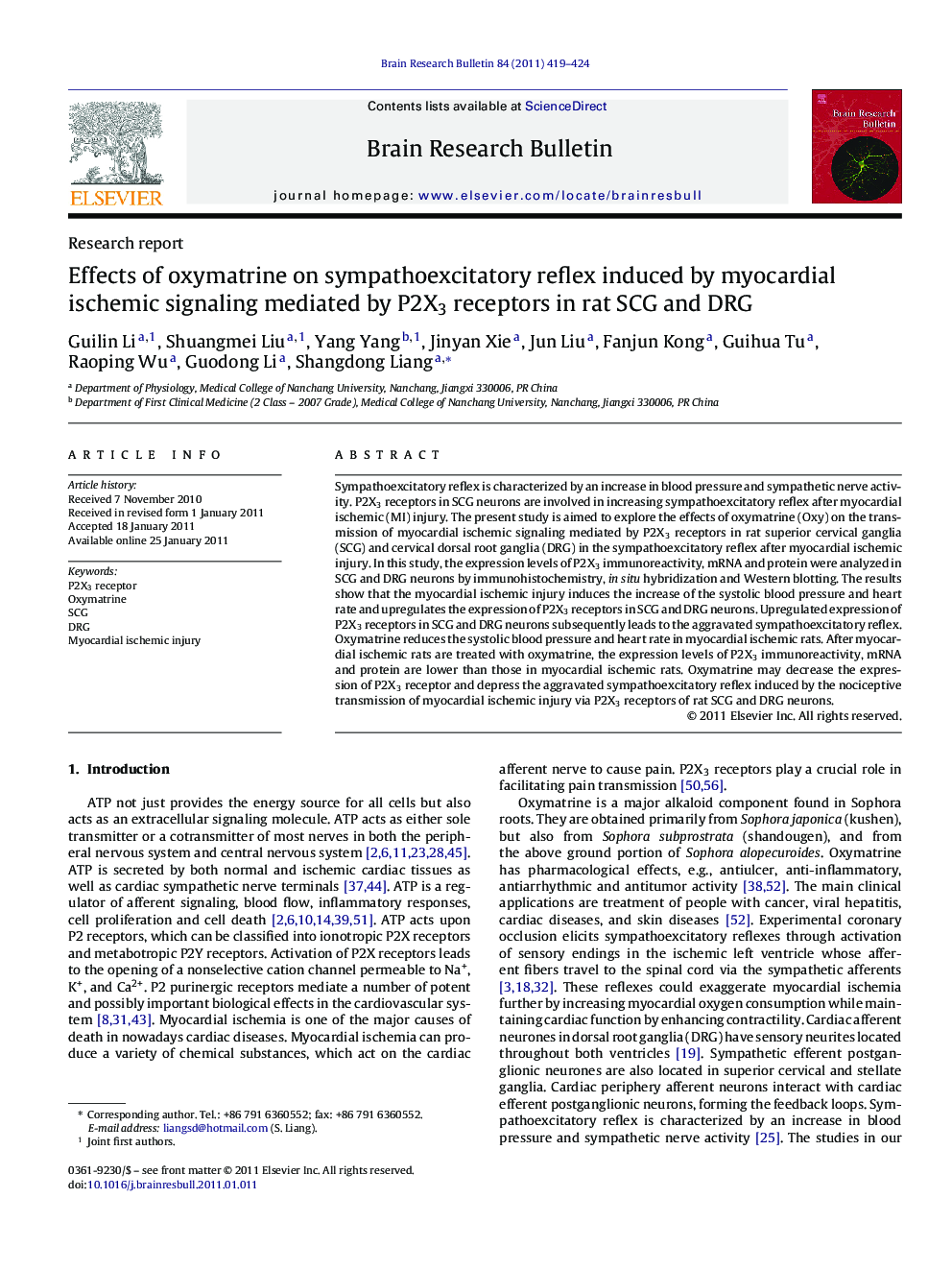| Article ID | Journal | Published Year | Pages | File Type |
|---|---|---|---|---|
| 4319096 | Brain Research Bulletin | 2011 | 6 Pages |
Sympathoexcitatory reflex is characterized by an increase in blood pressure and sympathetic nerve activity. P2X3 receptors in SCG neurons are involved in increasing sympathoexcitatory reflex after myocardial ischemic (MI) injury. The present study is aimed to explore the effects of oxymatrine (Oxy) on the transmission of myocardial ischemic signaling mediated by P2X3 receptors in rat superior cervical ganglia (SCG) and cervical dorsal root ganglia (DRG) in the sympathoexcitatory reflex after myocardial ischemic injury. In this study, the expression levels of P2X3 immunoreactivity, mRNA and protein were analyzed in SCG and DRG neurons by immunohistochemistry, in situ hybridization and Western blotting. The results show that the myocardial ischemic injury induces the increase of the systolic blood pressure and heart rate and upregulates the expression of P2X3 receptors in SCG and DRG neurons. Upregulated expression of P2X3 receptors in SCG and DRG neurons subsequently leads to the aggravated sympathoexcitatory reflex. Oxymatrine reduces the systolic blood pressure and heart rate in myocardial ischemic rats. After myocardial ischemic rats are treated with oxymatrine, the expression levels of P2X3 immunoreactivity, mRNA and protein are lower than those in myocardial ischemic rats. Oxymatrine may decrease the expression of P2X3 receptor and depress the aggravated sympathoexcitatory reflex induced by the nociceptive transmission of myocardial ischemic injury via P2X3 receptors of rat SCG and DRG neurons.
